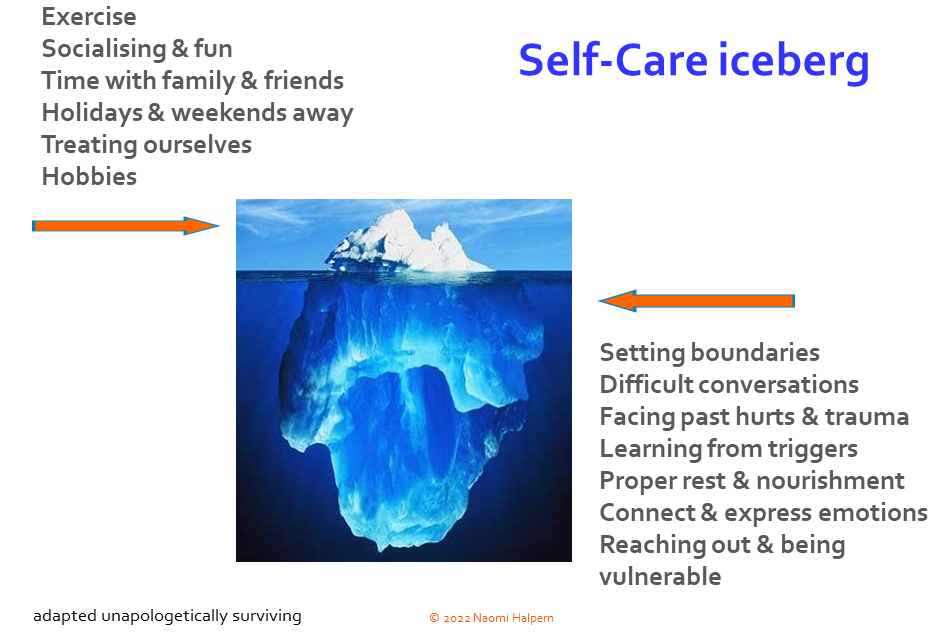“The expectation that we can be immersed in suffering and loss daily but not be touched by it is as unrealistic as expecting to be able to walk through water without getting wet” Rachel Naomi Ramen
Mental and allied health professionals, lawyers, the judiciary, and corrective services staff intersect the lives of others at critical and often traumatic junctures. These professions are frequently indirectly exposed to the traumatic experiences of others through discussion, viewing distressing images, reading police, psychological and medical reports and victim impact statements. They often work with victims of trauma and perpetrators of crimes. Additionally, perpetrators of crime are commonly victims themselves, often childhood trauma and abuse. Professionals may find themselves grappling with seemingly intractable ethical dilemmas, individual vs community and justice vs mercy.
The impact of indirect exposure to trauma is called vicarious trauma (VT) and sometimes called secondary traumatic stress (STS), although there are differences. STS is experienced by professionals who witness the trauma of others but don’t have an ongoing empathic relationship. STS is an acute response. VT is the impact of indirect exposure to another’s trauma in an ongoing empathic relationship. VT is a cumulative impact.
VT is experienced as a profound alteration in a person’s emotional, physical, psychological, and spiritual (meaning and purpose) domains. PTSD-like symptoms may develop in addition to negative changes in sense of Self and identity, innate beliefs, cognitive schemas, and attitudes towards the world and others. Unaddressed, VT can lead to a decrease in a sense of life meaning, or purpose. Compassion fatigue is characterised by emotional and physical exhaustion leading to a diminished ability to empathise or feel compassion for others. It is often described as the negative cost of caring or an occupational hazard.
The impacts of VT can be experienced in all areas of a person’s life; professionally an inability to set boundaries and make ethical decisions, difficulty prioritising workload, with poor outcomes for clients and conflict with colleagues; interpersonal conflicts with partner, family and friends, difficulties with sexual functioning, impaired parenting and divorce; mental and physical health can suffer including emotional numbing, depression, anxiety, substance abuse, sleep disorders and other symptoms of severe stress. VT may at times be a contributing factor in workplace bullying, harassment, unchecked countertransference, and sexual boundary violations in psychotherapy (Steinberg, Alpert, Courtois, 2021) .
Research indicates that trauma therapists with a personal history of trauma are at greater risk of developing VT than therapists who do not have a personal history of trauma (Pearlman, L. A., & MacIan, P. S., 1995). In addition to greater risk of VT they are at further risk of reactivation of past trauma. Many years ago, I worked with a woman who was an experienced ER nurse. One day she arrived at her session and told me she needed to talk about an experience at work. A traffic accident had resulted in the death of two young children, a girl around 8 years and her brother around 10 years old. She was tasked with preparing the body of the little girl for the parents to say goodbye. It was a highly distressing story. My client described the child’s injuries, one of which was a broken jaw. As she was talking, I began to feel my heart race, I could taste the metallic flavour of blood in my mouth. In my mind’s eye I saw images of the undercarriage of a car accompanied with sensations of heat and the smell of petrol. I was re-experiencing an accident I had as an 8 year old, when I was knocked off my bike by a car. One of the injuries I sustained was a broken jaw. As a trauma therapist I was aware of the potential for reactivation of past trauma. This knowledge didn’t prevent it from happening but I was able to ground and soothe myself so I could remain present with my client. It was however a relief when the session ended, and I was able to reflect on the experience. I hadn’t thought about the accident for decades. If it ever came up in conversation, I had never experienced the visceral sensations that arose in the session with my client.
A recent study into VT in corrective services employees in Australia found higher traumatic caseload increases the risk of developing VT, VT increased with each year of employment within the job, non-custodial staff, who are more regularly required to examine narratives of offenders’ crimes would exhibit higher rates of VT than custodial staff, and staff whose role requires them to deal either therapeutically or systematically to reduce offenders’ risk of recidivism are almost three times more likely to experience symptoms of VT than custodial officers who operate from a more punitive perspective (Campbell, J. 2019).
Current life stressors, such as health issues of oneself or a loved one, relationship or financial stressors, common life events that many people experience, can impact resilience, and make a professional more vulnerable to experiencing VT.
In the trauma therapy field research and training around VT have been available for over two decades. Supervision is a safe and confidential forum where psychologists, social workers and counsellors can explore the interaction of transference, countertransference, and VT. This offers the opportunity to identify and address potential difficulties before therapy reaches an impasse and client and therapist potentially harmed. Supervision is not a failsafe solution. Anecdotally, clinicians working within organisations confide that supervision may not occur on a regular basis, that case load levels mean there is not the opportunity to discuss all their clients, that supervision can be taken up with organisational issues rather than clinical discussion or their supervisor may not have the experience to assist with some cases. Clinicians in private practice often work in isolation, which is a VT risk factor. They may not have time or resources to seek regular supervision, which at times has resulted in seeking assistance after a crisis has developed. Budget limitations for professional development training in organisations and private practice is usually prioritised for knowledge and skill development over selfcare. These are not criticisms or judgments but observations about the realities and challenges of the field.
A 2019 survey of 200 lawyers across Australia and New Zealand found 85% reported experiencing anxiety and 60% had experienced depression (Meritas, 2019). Law is a competitive and high-pressured profession. These elements play a significant factor in the high rates of reported depression and anxiety, including concern disclosure of work-related stressors may have a detrimental impact on career prospects. The impact of VT must be considered alongside workplace culture. The legal profession is tackling long standing issues of gender pay inequality, discrimination, bullying, sexual harassment, and assault. The intense nature of legal work may see similar transference and countertransference dynamics as in psychotherapy. Lawyers, probation and parole officers are at similar risk as therapists regarding boundary crossings in their professional relationship with clients.
Law firms in Australia are increasingly recognising impacts on mental health and wellbeing. A growing number of firms provide regular VT training and trauma informed practices, such as how to respond to highly emotionally dysregulated clients and expressions of suicidality.
In mental health, legal and other professions where employees are exposed to direct and indirect trauma, such as paramedics, SES, firefighters, police and military, there are many considerations around supporting mental health and wellbeing. Trauma-informed services (TIS) recognise the high prevalence of trauma in society and therefore, the possibility of trauma experiences in the lives of clients and employees. A TIS is an environment where staff and the individuals they serve feel physically and psychologically safe. This is achieved through developing trauma informed policy, procedures, and protocols at every level of the organisation, including a VT policy.
The following discussion explores mutual obligations of employers and employees through a three-tier approach to creating a psychologically safe work environment that recognises and addresses the inherent risks to mental health of employees exposed to traumatic material and working with highly distressed clients: organisational – interpersonal – personal (Kezelman, C. A., Stavropoulos, P. 2020)










